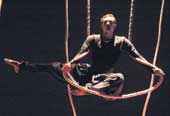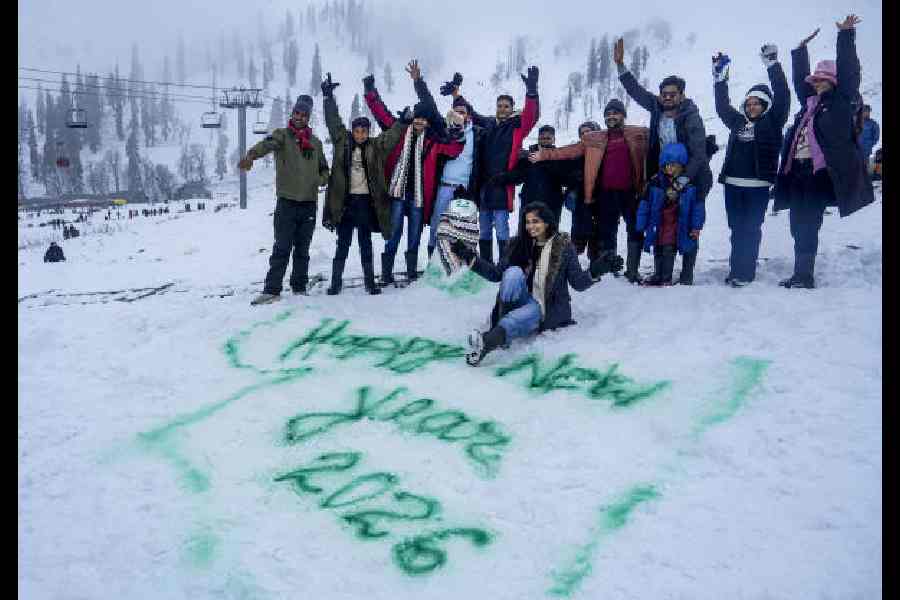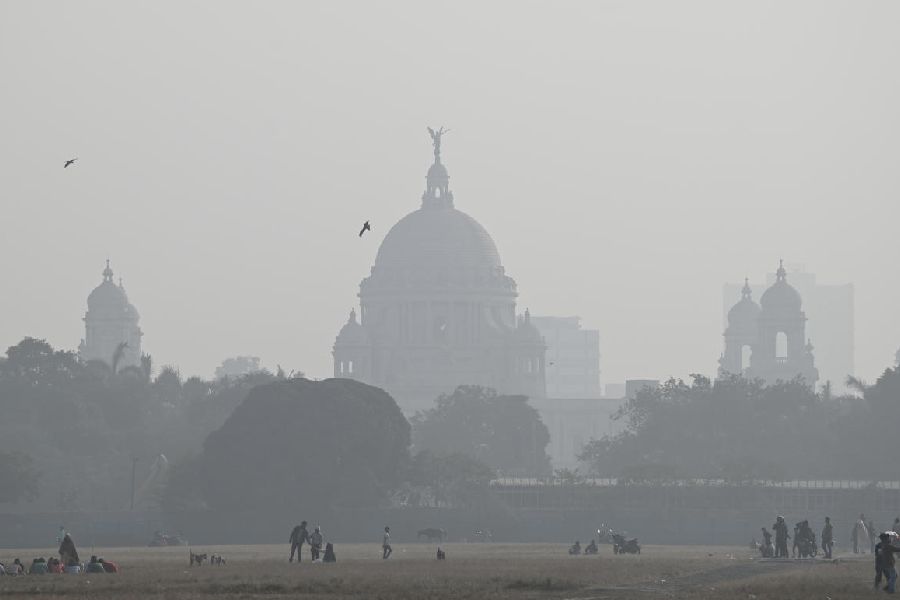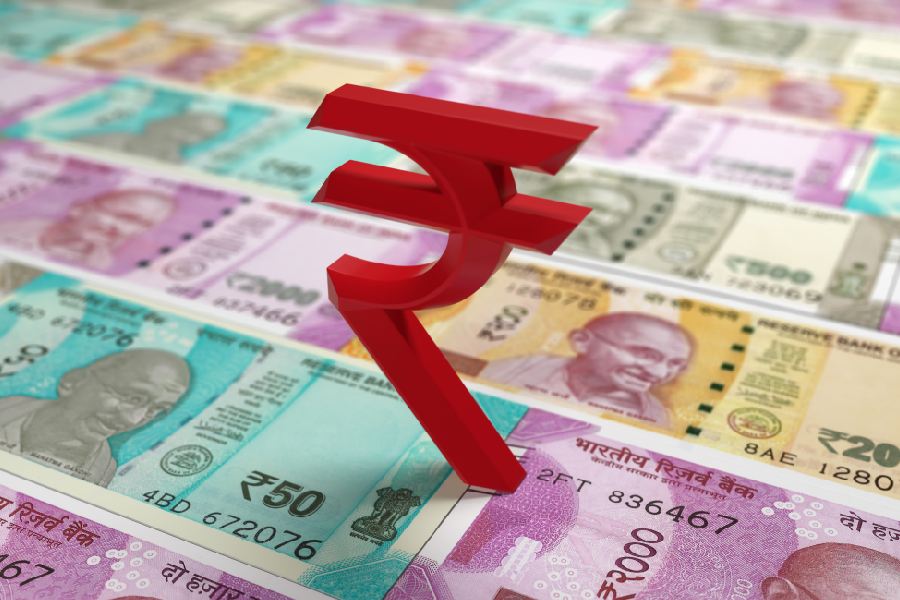 |
| A dance item combining acrobatics and rope work presented at Celebrations ’06 |
Breaking new frontiers within the tradition of classical Kathak has always been Padatik Dance Centre’s forte. This experimentation with different innovative forms based on nuances of Kathak found expression in Celebrations ’06 staged at Kala Mandir on November 9.
Choreographed by Padatik’s director, Chetna Jalan, the curtains went up on Swa Chhanda, which wove together a series of solo performances against a rhythmic background of talas engaging pure Kathak steps.
The electrifying Kathak moves to the accompaniment of tabla, guitar and a host of other eclectic sounds thrown in together was a visual treat. The music arranged by Jayanta Banerjee and composed by Debasish Sarkar livened up the proceedings. Tita kata gadi ghene dha covering the range from the slow beat to the fast tempo was exploited effectively to bring in much variation.
The well-choreographed exploration of laya and chhanda bound the dancer to the basic structure yet left enough space for innovation. The chakkar intrinsic to Kathak was creatively utilised to denote the movement of birds and was rendered with a lot of grace.
The dancers exploited the stage space effectively, lending a certain charm to the item. And even though one dancer briefly missed a step and took an extra leap in the air to cover up the flaw, it didn’t take away anything from the beauty of the performance.
Chetna Jalan’s voiceover, explaining each item and the history behind it, helped comprehend the items and their subtle nuances even better.
The next item titled The Sufi Experience was an attempt to make the Kathak heritage accessible to the youth. This contemporary element of Kathak — also known as Sufi Kathak — was based on four Sufi songs with background scores remixed by Jayanta Banerjee. The spirituality of Sufism and its romantic ethos were well expressed through the fluid and flexible movements of the dancers.
The first song Sanson ki Mala Pe, with its typical Persian flavour, by the late Nusrat Fateh Ali Khan underlined the ethos of the Mughal era when Kathak was a popular dance form. Ritusri Chowdhury and Kajri Majumdar brought out the Sufi asceticism successfully through whirling moves. In fact, the essence of Sufism blended beautifully with Kathak and the chakkar in Kathak fused with the whirling dervishes of Sufism in Tere Ishq Mein performed by Tanushree Kundu and others.
Western classical ballet steps in combination with Indian classical music resulted in a new interpretation of Bickram Ghosh’s Rhythmscape. Taking the modern theme further, Resonance (with music by Oscar Lopez), a fusion of Flamenco (a Spanish dance form) and Kathak, brought to surface the wandering spirit of the nomads.
The piece de resistance of the event was saved for the last — a dance item to Shakti Chattopadhyay’s poems — Rakho Tomar Uddhato Pa, Abani Bari Aachho and Dhangsho Karo. Incorporating acrobatics, rope work and strong audio-visuals in an apt stage setting, the movements were based on the impulses triggered by the poems. They succeeded in portraying the contrasts and the contradictions between the ghoulish and the beautiful, as well as the clash of the sexes and the fatal attraction.










